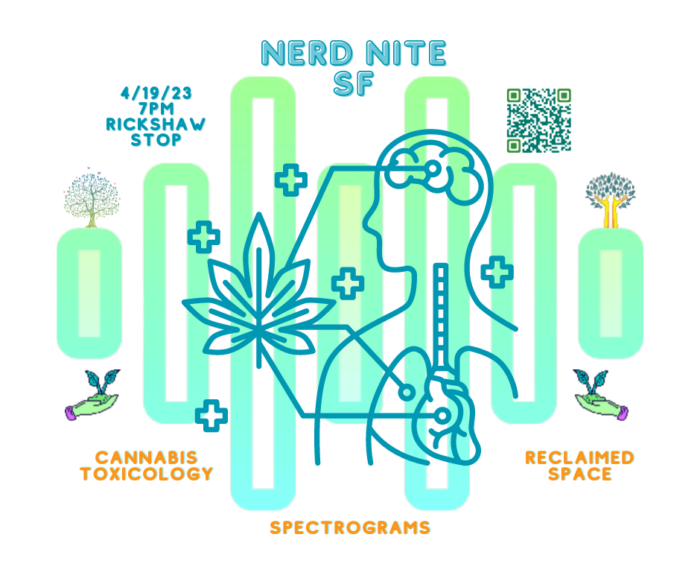
featuring cannabis, spectrograms, & reclaimed space!
Wednesday April 19, 2023
7pm doors, 8pm show
Rickshaw Stop (155 Fell @ Van Ness)
$10 online (+fees) / $12 door
Tickets here!
The unquiet history of Parcel 36 by Elizabeth Creely, with a performance by Chi
Listen to the unquiet history of Parcel 36, an abandoned railroad track in San Francisco’s Mission District, and an artefact from a time when squatters on unceded Ohlone land settled land disputes with guns, axes and bayonets. John Center and Samuel Crim, two of the largest landowners in the Mission and would-be railroad barons, left a legacy of strife and confusion that continues today. What do you do with a parcel no one owns? Give it back to the community. Friends of the Mission Greenway, together with our neighbours and supporters, are creating a pedestrian greenway and garden to restore the right-of-way to the public. Join us at Nerd Nite as we talk about 19th-century squatters, one ghost, and the future of Parcel 36, one of the last pieces of unowned land in the Mission District.

Elizabeth Creely is a writer, and public historian who lives in San Francisco’s Mission District. She has explored almost every type of environment California has to offer: urban, coastal, riverine, grassland, desert and montane. She works for the Consulate General of Ireland, is occasionally a contributing writer to Mission Local, a bilingual, local independent online news site that covers the Mission District of San Francisco and a member of the San Francisco Department of Memory.
Cannabis Toxicology: The Good, The Bad, and The Risky by Dr. Echo Rufer
(Legal) cannabis is more popular (and available) than ever, but how do you make decisions about healthy use? Is natural safer than synthetic? Does a super high THC concentration actually matter? What was the deal with the “Vapegate” crisis a few years back, and how can you avoid problems like it? FIND OUT from a real, actual cannabis toxicologist and impress your “buds” on 4/20!
Acoustic Detective Work: How to read spectrograms by Dr. Bryn Hauk
Sounds have a fingerprint, and you can learn to read them off a page. You probably know about soundwaves, which show amplitude over time. Add a third dimension – frequency – and you get a spectrogram. We will learn to read these dimensions to identify speech sounds!